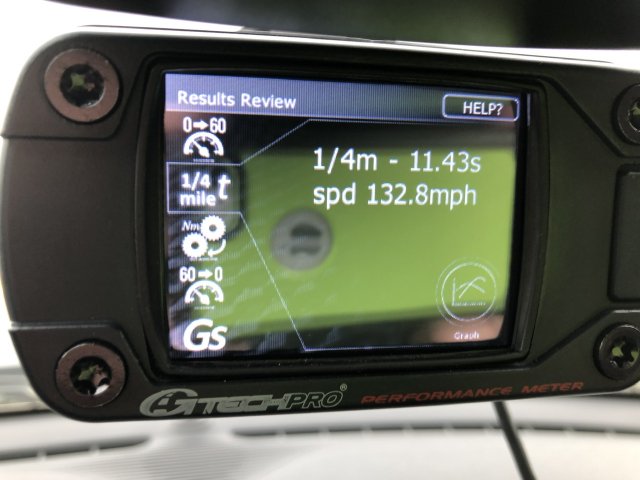Just a note on STD vs SAE correction factors. STD can actually read the same or even lower then SAE numbers depending on the atmospheric conditions at the dyno when the tests are being ran. SAE adjusts the readings as well to atmospheric conditions according to the SAE standard correction factors so numbers from around the globe can be more evenly compared. STD uses the conditions measured at the dyno at the time of the test, SAE a set of dictated conditions. I know this to be factual as I dyno cars often on a friends dyno and have switched the readings around between SAE and STD, it’s only a button click away, and have witnessed at an 800 hp level the readings at times to be exactly the same, STD be a hair higher, a bit higher, or in really crappy conditions STD was LOWER then SAE correction factors.
BTW, NICE numbers and GREAT looking ride.
Thanks.
I suppose anything is possible but I've never personally seen STD numbers lower than SAE when measured on the same dyno. Typically the tuner can switch the readings like you said with one click and SAE is typically always lower.
Here's a good explanation of the difference and why SAE will typically read lower, basically it corrects for a higher temp than STD.
http://www.superchevy.com/how-to/gh...ion-of-dyno-correction-real-wheel-horsepower/
STD, or standard correction, represents one of the oldest correction factors used by the Society of Automotive Engineers (SAE). STD is also known as J607 and it uses standard conditions of 60-degrees F, 29.92inHg and 0-percent humidity.
SAE J1349 is the current gold standard of dyno testing and represents the newest widely accepted industry standard correction factor. Reengineered in 1990 (yeah, a long time ago), the SAE correction factor standardizes temperature to 77-degrees F, 29.23inHg and dry, 0-percent humid air. SAE, unlike uncorrected or STD, also uses a mechanical efficiency (friction) modifier in the correction factor, which assumes an 85-percent mechanical efficiency or a 15-percent differential in engine power due to frictional loss, which is fairly accurate in a standard all-motor application. Now, if you're thinking this means it reads 15-percent higher, that is not the case at all. In fact, SAE, due to the higher and more realistic standard temperature and absolute pressure factors will normally read 4-percent lower than a dyno graph printed in STD.


